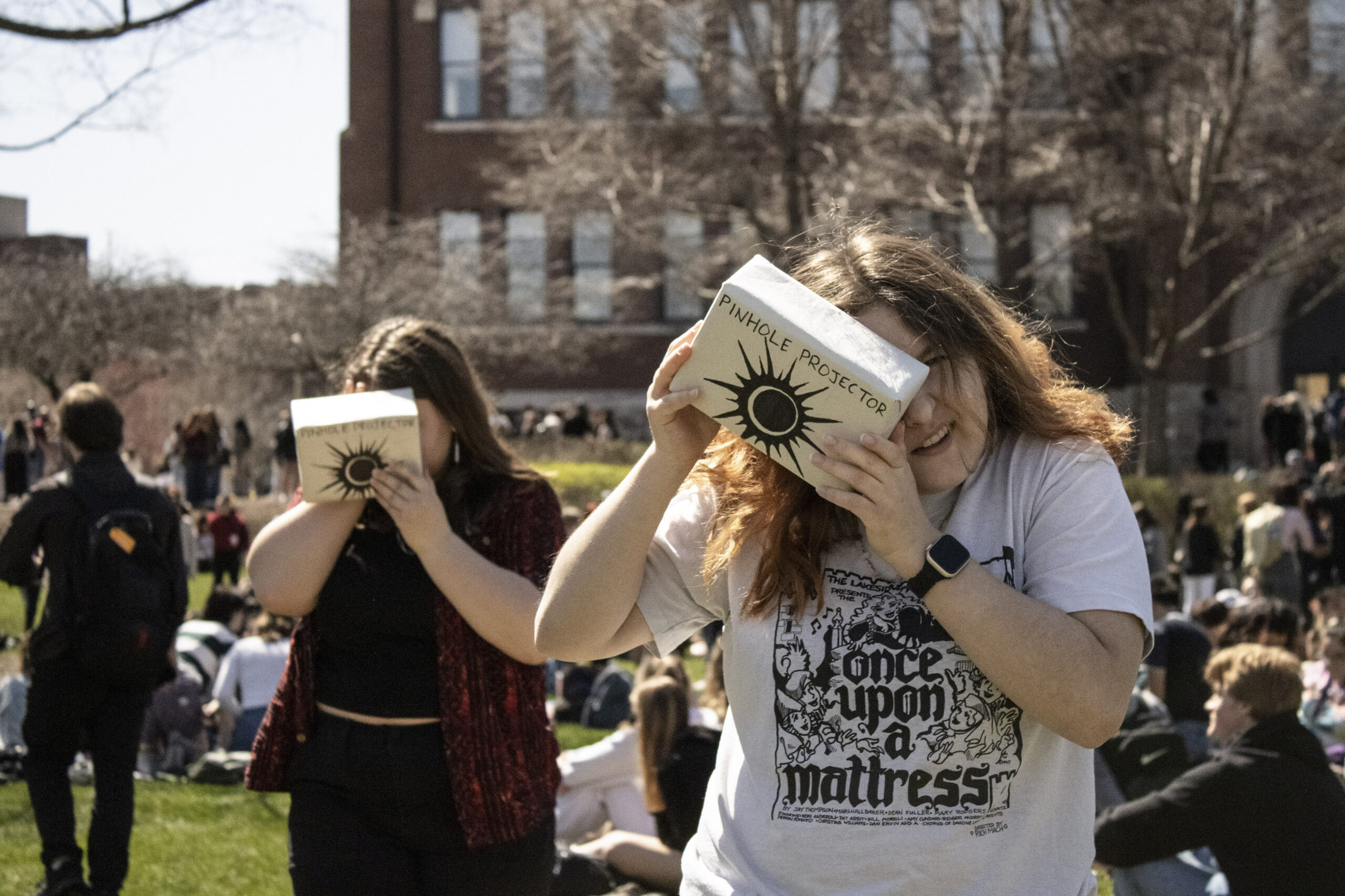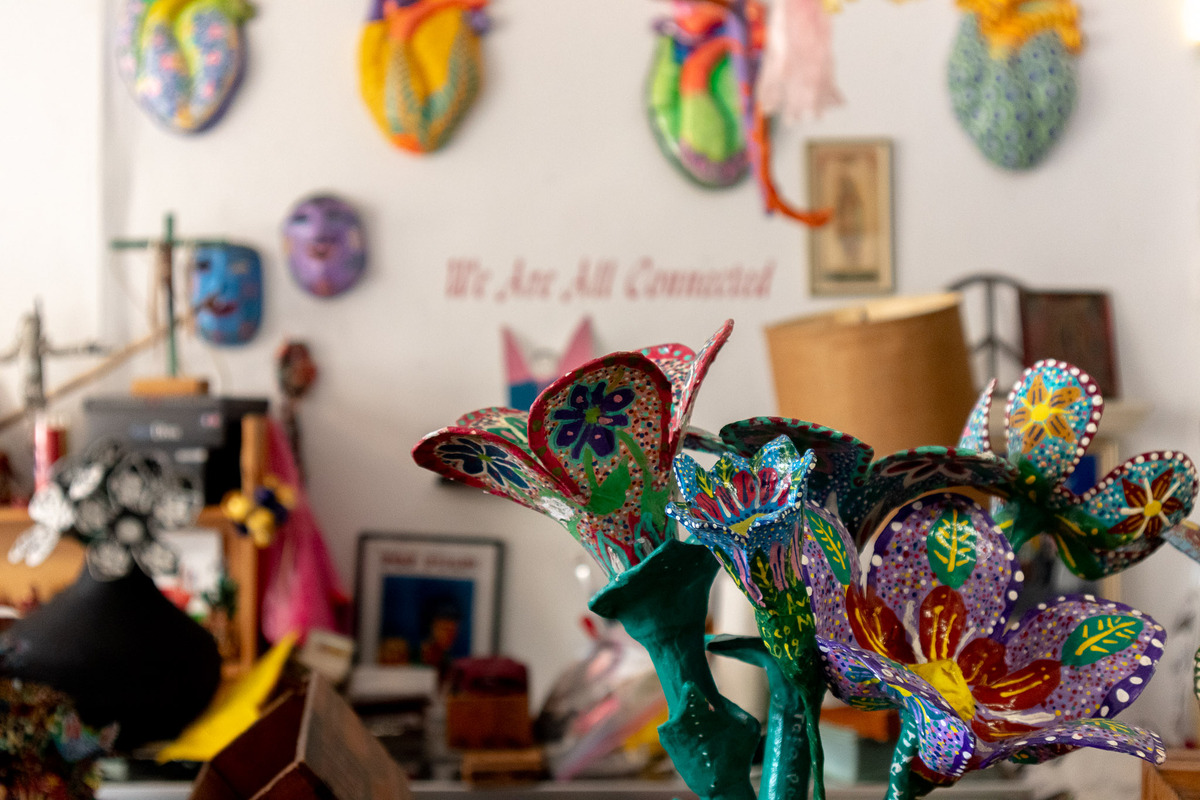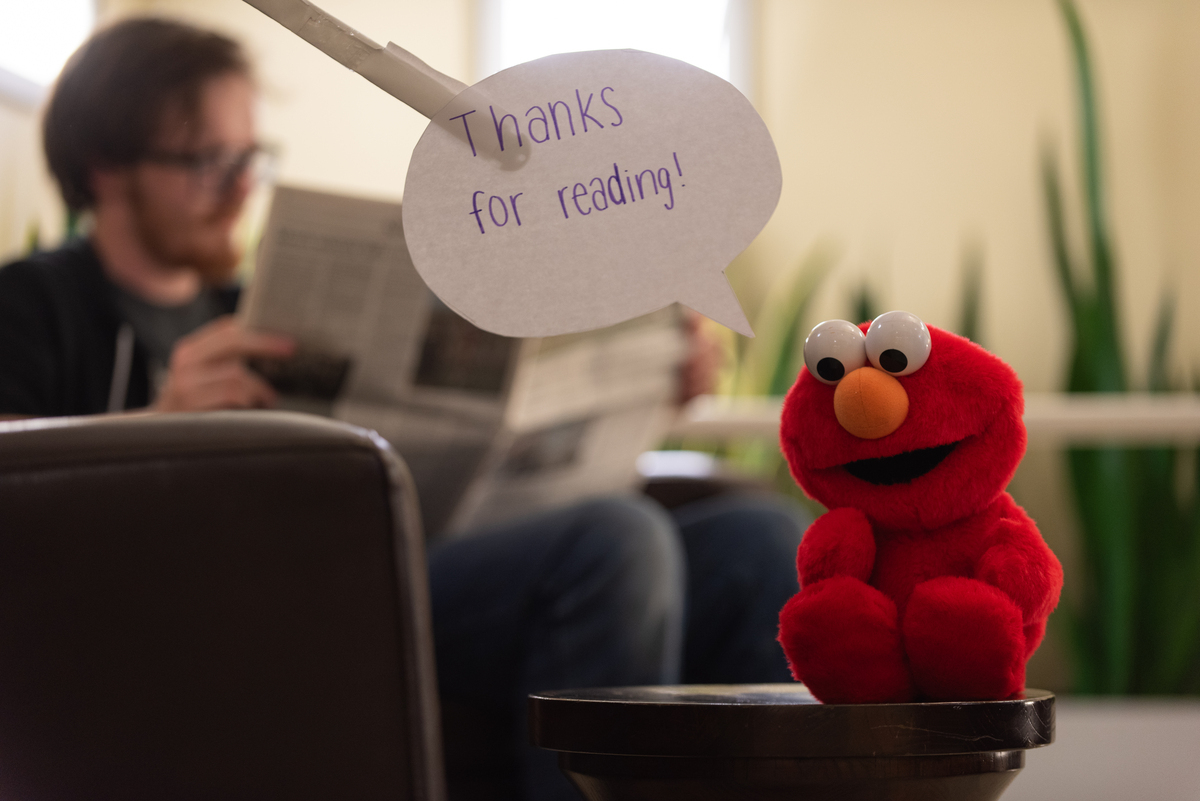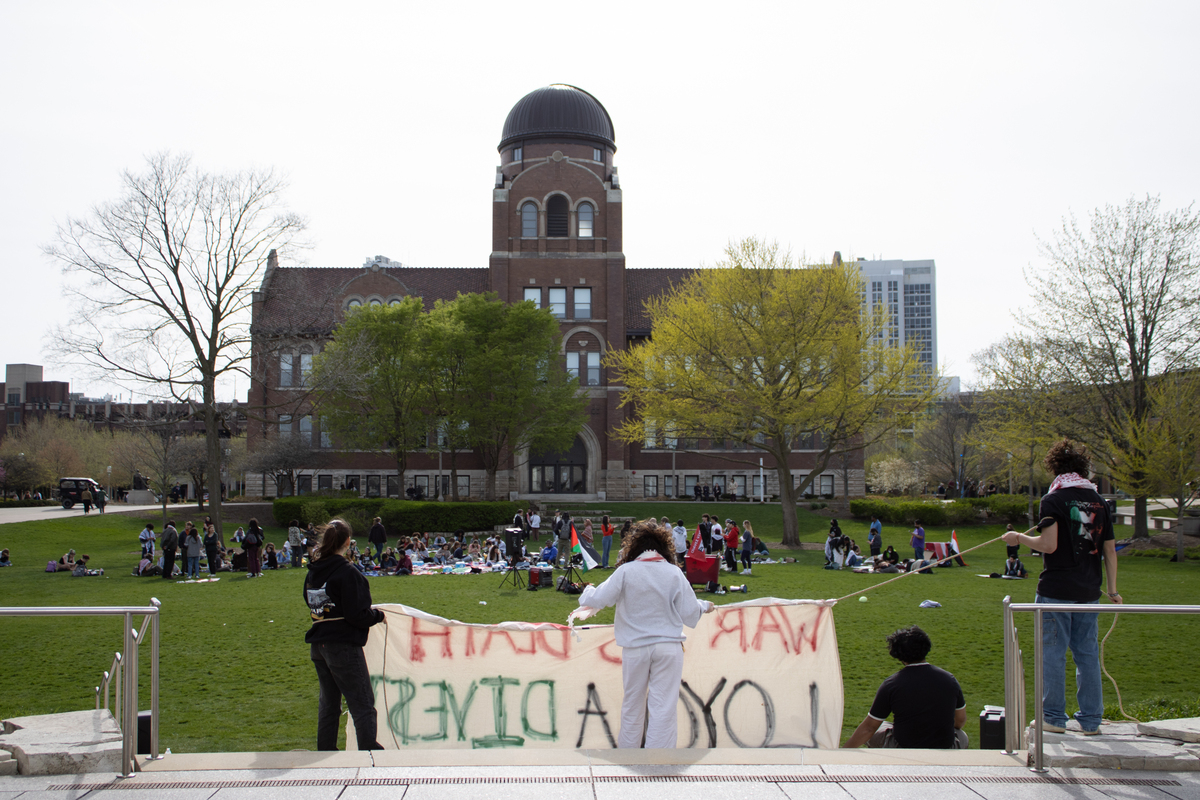The penultimate seasonal showing of Joffrey Ballet’s “Frankenstein” showcased beauty and monstrosity from the moment the lights dimmed.
‘Frankenstein’ Ballet Haunts the Lyric Opera

Content warning: Suicide, murder
Sequins, lace and gory costumes were all seen in the audience at the Lyric Opera of Chicago Oct. 21. The penultimate seasonal showing of Joffrey Ballet’s “Frankenstein” showcased beauty and monstrosity from the moment the lights dimmed.
Based on the eponymous novel by Mary Shelley, artistic director Ashley Wheater portrayed a complex story of life, death and guilt through the silent art of dance.
Signaling a passage of time, the curtain opens with the young versions of main characters Elizabeth and Victor Frankenstein who are later replaced by their older versions.
Played by Alberto Velazquez, Victor Frankenstein is a medical student at Ingolstadt University. Afflicted by the death of his mother, his character’s obsession with death is relayed through jarring movements and ambitious facials. Elizabeth Lavenza, played by Victoria Jaiani, is the adopted daughter in the Frankenstein family. As the two grow up, their romantic affection grows and they eventually get engaged.
A red journal is swiftly given to Victor by his father Alphonse, played by Miguel Angel Blanco, a parting gift before he goes off to university. Victor’s mother gifted him a locket with her portrait shortly before her death, which he carries through various scenes to show Victor the importance of family. Jeraldine Mendoza plays the character of Caroline Beaufort, Victor’s mother, and immediately draws the crowd in with her graceful dancing opposite her counterpart.
As each dancer makes their debut on stage, their movements convey an elegance as the audience becomes familiar with their role as aristocratic elites. Embodying their characters, the dancers use movements such as swift leaps and spins, while each communicating their own distinct message.
Between the cohesive pas de deux and lingering facial expressions between characters, a hug or a touch of the arm could signal deep emotion through a wordless performance. Along with props, the language of touch conveyed a connection between two characters.
Portraying Victor’s family’s hectic dynamic was preserved through the dancers’ sprint-like movements, which resembled youthful play. Regardless of speed, dancers seamlessly glided across the stage.
As Victor begins his studies at university, the stage portrayed a hands-on and unconventional classroom. The playful dancing between the male students and Victor at the beginning of the third scene appeared deliberately casual.
Grieving his mother’s death, the program says he is “fueled by passion and determination” to create a hideous monster that’s just as scared as his creator. Introducing the idea of bringing the dead back to life, we see the evolution of Victor’s idea to bring The Creature to humanity.
Upon meeting The Creature, played by Hyuma Kiyosawa, the audience can see he appears to be naked with stitches running all down his body. Even on top of his bald head The Creature has a horrific scar from his creation process, making him a more terrifying being. The makeup and costume of The Creature do a beautiful job supporting the dancer’s expression of raw dejection.
The Creature creeps off the table after being jolted alive from pyrotechnic visuals on stage, and dances almost in a contortionist manner. The suspense builds through the audience as the monster comes alive. His eerie movements exemplify a curious and unknowing creature.
Knowing nothing about the world or language, The Creature briskly runs in fear as Victor is equally as shaken up by his creation, concluding Act 1.
Between the changing costumes and acting done by the dancers, the audience has a clear understanding of the show so far. Left wanting more, Act 1 leaves an imposing impression of dramatic family relationships and the struggle of dealing with loss.
Showing complex equations that mirror the type of work in Victor’s journal, the curtain then rises and we see the effects Victor’s actions have on himself. He experiences nightmares and terrors of what he’s created, shown through the dancer shaking and being jolted awake by Elizabeth and school friend Henry.
The Creature’s first appearance in Act 2 is a solo that embodies his confusion, fear and longing for love. He finds Victor’s journal in the coat pocket he stole before promptly running away from his creator. After learning of his origin story, the scene has a breakthrough moment of realization for The Creature. The music intensifies and he finally has a sliver of purpose in the world he was thrown into.
From this point on, Victor is noticeably on edge, shown through pacing and frantic movements while weaving through other dancers. With the looming possibility of The Creature coming back, Victor’s dancing becomes physically and emotionally distant from other performers and his sudden mood change is evident to the audience. He is often distracted by the vision of The Creature in social settings, creating a rift in his relationships with his family and Elizabeth.
Victor’s younger brother William celebrates his birthday and various dancers on stage are seen blindfolded, not letting that hinder their almost perfect spacing on stage and near flawless coordinated dancing with their partners, leaving the audience in awe. While The Creature emerges again to get revenge on Victor by killing William, the emotion exuded by the young dancer playing William can be felt by the audience and the dancers on stage with him.
In his first duet with William, props are another important aspect of the scene. It seems the only reason he is comfortable being so close to The Creature is due to the fact that he is blindfolded and cannot see the physical curse The Creature has been plagued with, allowing the monster to feel safer opening up. William’s dancing came with ease, convincing the audience he sees The Creature as a friend.
In a hopeful attempt at achieving companionship, The Creature vulnerably dances with other characters. Contrasting the chemistry with William, The Creature’s duet with Elizabeth is seen as more apprehensive and violent. As she suddenly jolts away and depicts an unnatural energy next to The Creature, we see her in an uncomfortable position. While Elizabeth is an accepting and kind character, their dancing doesn’t connect as well as William’s due to her underlying fear of The Creature.
Eventually retaliating against Victor by killing almost everyone he is close with, audience members can still see The Creature’s desperation. Overcome with guilt and stress, Victor ends the show by killing himself with a gun once used for his protection against The Creature.
As The Creature cradles his maker, it’s undeniable that the theatrics and overall performance by each dancer carried the audience into a juxtaposed emotional state. The raw sentiment released by The Creature almost encourages the audience to feel sorry for him, while also seeing how the overwhelming guilt and anxiety overtook Victor.
As the sophisticated yet bold music fiercely closes the show, the lasting impression given by The Creature is another hopeless notion to achieve a sense of family by attempting a connection with Victor — a man who left him for dead.
Featured image courtesy of Todd Rosenberg for Joffrey Ballet.










